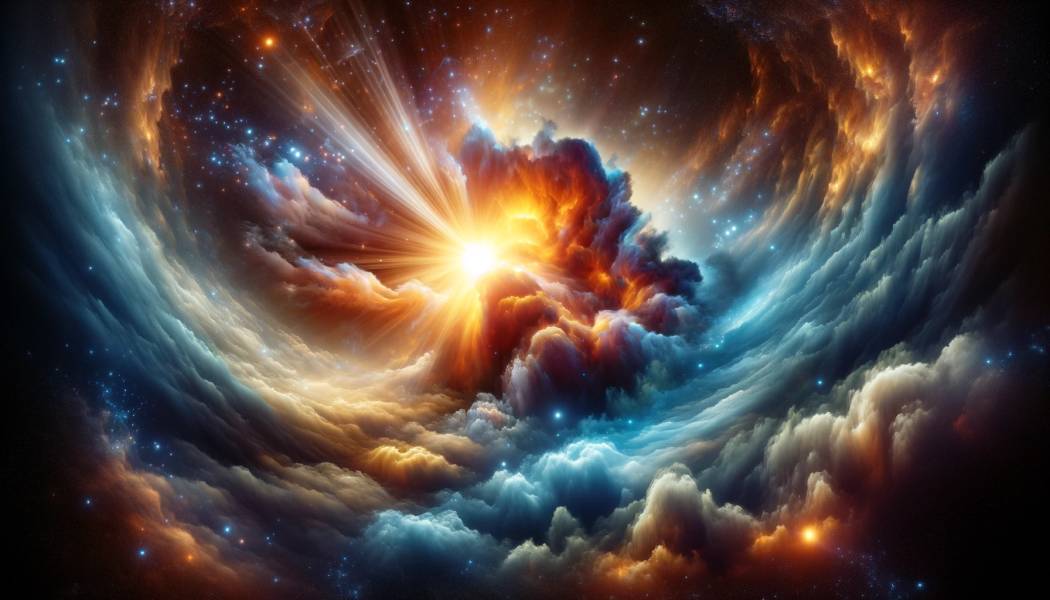The Science Behind Stars

Stars have fascinated humanity since ancient times, twinkling in the night sky, inspiring myths, guiding sailors, and serving as subjects for scientific inquiry. They are not just dots of light in the night sky but complex celestial bodies with intriguing life cycles and characteristics. This article delves into the science behind stars, exploring their life cycle, the reason behind their twinkle, and other captivating facts.
Birth of a Star: The Stellar Nursery
The journey of a star begins in a stellar nursery, typically a nebula, which is a massive cloud of gas and dust. Over millions of years, gravity pulls this gas and dust together, forming clumps. When these clumps reach a critical size and temperature, nuclear fusion ignites, marking the birth of a new star. This process transforms hydrogen into helium, releasing immense energy that lights up the star.
Main Sequence: The Stable Years
Once a star has ignited, it enters the 'main sequence' phase of its life. This is a long, stable period where the star fuses hydrogen into helium in its core. The balance between the gravitational pull inward and the pressure from nuclear fusion outward maintains the star’s stability. Our Sun, a typical main sequence star, has been in this phase for about 4.5 billion years and is expected to remain so for another 5 billion years.
Twinkling Stars: An Atmospheric Phenomenon
The twinkling of stars, known as 'stellar scintillation', is not a property of the stars themselves but a result of Earth’s atmosphere. When starlight passes through the different layers of the atmosphere, which vary in temperature and density, it bends in different directions. This bending causes the star's light to appear to twinkle to observers on Earth.

The Aging Process: Red Giants and Supernovae
As stars exhaust their hydrogen fuel, their life cycle progresses. For medium-sized stars like the Sun, this leads to the 'red giant' phase, where the star expands significantly as it starts to fuse helium. For much larger stars, the end of the main sequence phase can result in a spectacular explosion called a supernova, which can briefly outshine entire galaxies and distribute heavy elements into space.
Star Death: White Dwarfs, Neutron Stars, and Black Holes
The final stage of a star’s life depends on its size. Smaller stars, like the Sun, will eventually shed their outer layers, leaving behind a 'white dwarf' – a hot, dense core that slowly cools over billions of years. In contrast, the remnants of a supernova can form a 'neutron star', an incredibly dense object composed mostly of neutrons. The most massive stars may collapse into black holes, regions of space with gravity so strong that nothing, not even light, can escape.
Fascinating Star Facts
- The closest star to Earth, apart from the Sun, is Proxima Centauri, located 4.24 light-years away.
- Some stars, known as pulsars, emit beams of radiation that can be detected as pulses when they rotate.
- The largest known star is UY Scuti, which is about 1,700 times larger than the Sun.
- Binary star systems, where two stars orbit each other, are quite common in our galaxy.
- Stars come in different colors, which indicate their temperature: blue stars are the hottest, and red stars are the coolest.
Stars are not just distant, twinkling lights in the night sky, but are dynamic and complex celestial bodies with fascinating life cycles and properties. From their birth in nebulas to their ultimate fate as white dwarfs, neutron stars, or black holes, each star tells a unique story of cosmic evolution and the intricate workings of our universe.

